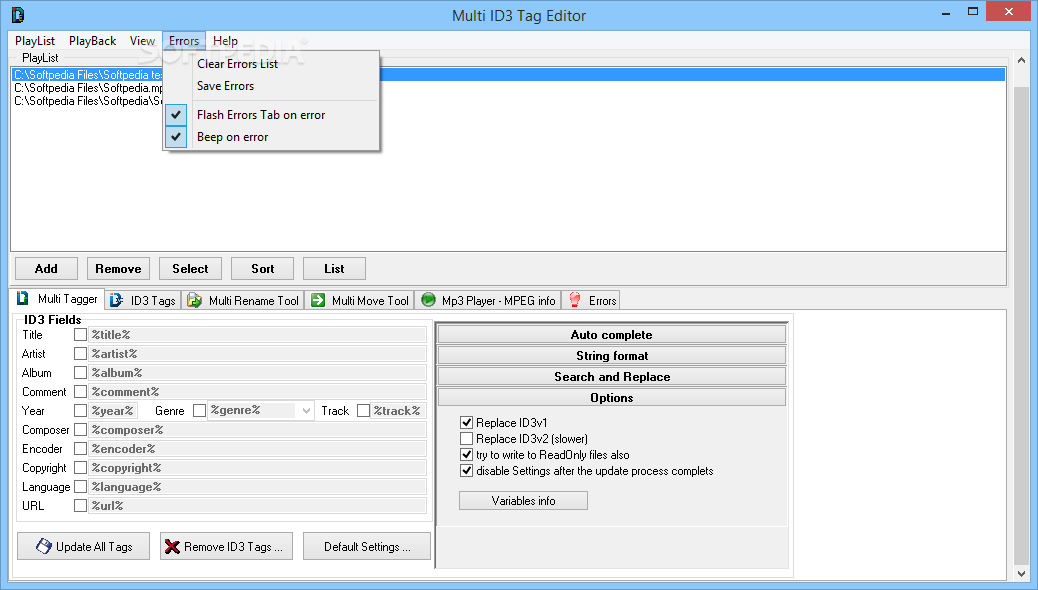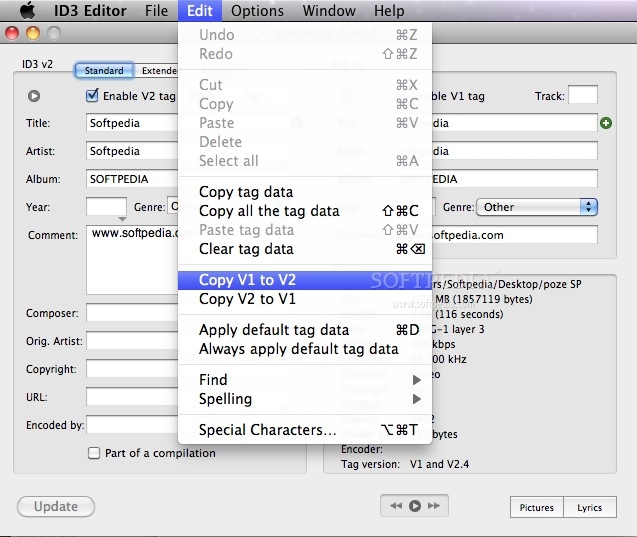

podcaster) name, genre, copyright information and more. This includes the episode title, artist (a.k.a.
#Id3 editor podcast update#
Add MP3 tags: I use PA Software's ID3 editor to update my MP3 episode with all of the info iTunes needs to identify it. I then export it back out of iTunes and save the MP3 to my Dropbox.ġ3. Export, Import, Export: Next, I export the audio file from Audacity as a WAV file, then import it to iTunes, where I convert it to an MP3. This is where my 45-50 minutes of audio gets trimmed down to a 3o-minute show.ġ2. I tend to be a bit of a perfectionist and I value good-quality audio, so I edit the episode thoroughly using Audacity, manually removing all unwanted sounds, truncating silences and leveling the audio. Edit: Editing a podcast episode can take on many different forms for different podcasters. In this phase, you'll edit and prepare your audio file for your audience.ġ1.

Phase Time Commitment: One to two hours, depending on the length of your show. I usually save the raw audio file to Dropbox (which has automatic cloud backup) in addition to my hard drive, just in case. Save the file: Please, PLEASE be sure to save the audio file. I wrap it up with a thank you and a call to action, which is usually to subscribe to my show on iTunes.ġ0. Record episode/conduct interview: I use my outline to record my episode, which usually takes 45-50 minutes. Intro/welcome: I record my traditional show intro, welcoming listeners and announcing the episode number, show title, etc.ĩ.

This also helps me to calm my nerves, as I am an introvert with an innate fear of public speaking.
#Id3 editor podcast software#
Test: I usually do a brief test recording to make sure everything is connected properly, and that the recording software is picking up the correct microphone. Ironically, the recording phase is the simplest of them all.ħ. If my mouth is making particularly gross sounds that day, I'll eat an apple or drink water -and if my voice is scratchy, I'll down a couple spoonfuls of warm honey. When I return, I chase the cats out of my office and apply a healthy dose of Chapstick to my lips. Take care of yourself: Once everything's all set up, I make a mug of tea or coffee (or pour a glass of wine, depending on the kind of day I've had), line up a couple glasses of room-temperature water for drinking while recording, and make a quick trip to the ladies' room. Equipment setup: After soundproofing, I set up my mic (a Blue Yeti USB mic that plugs right into my laptop), connect the mic and headphone cables, and open up the recording software I plan to use ( Audacity for a solo show or Skype for an interview).Ħ. This helps to absorb the soundwaves and minimizes the tinny, echoing sound that plagues many podcasts. I also make sure I switch my phone to airplane mode so that notifications, texts and phone calls don't disrupt my recording.ĥ. Soundproof: When I'm ready to record, I'll line my office and desk with towels and/or audio foam, minimizing any hard, flat surfaces. Once you're mentally prepared, it's time to set up your podcasting rig for optimal audio quality.Ĥ.


 0 kommentar(er)
0 kommentar(er)
